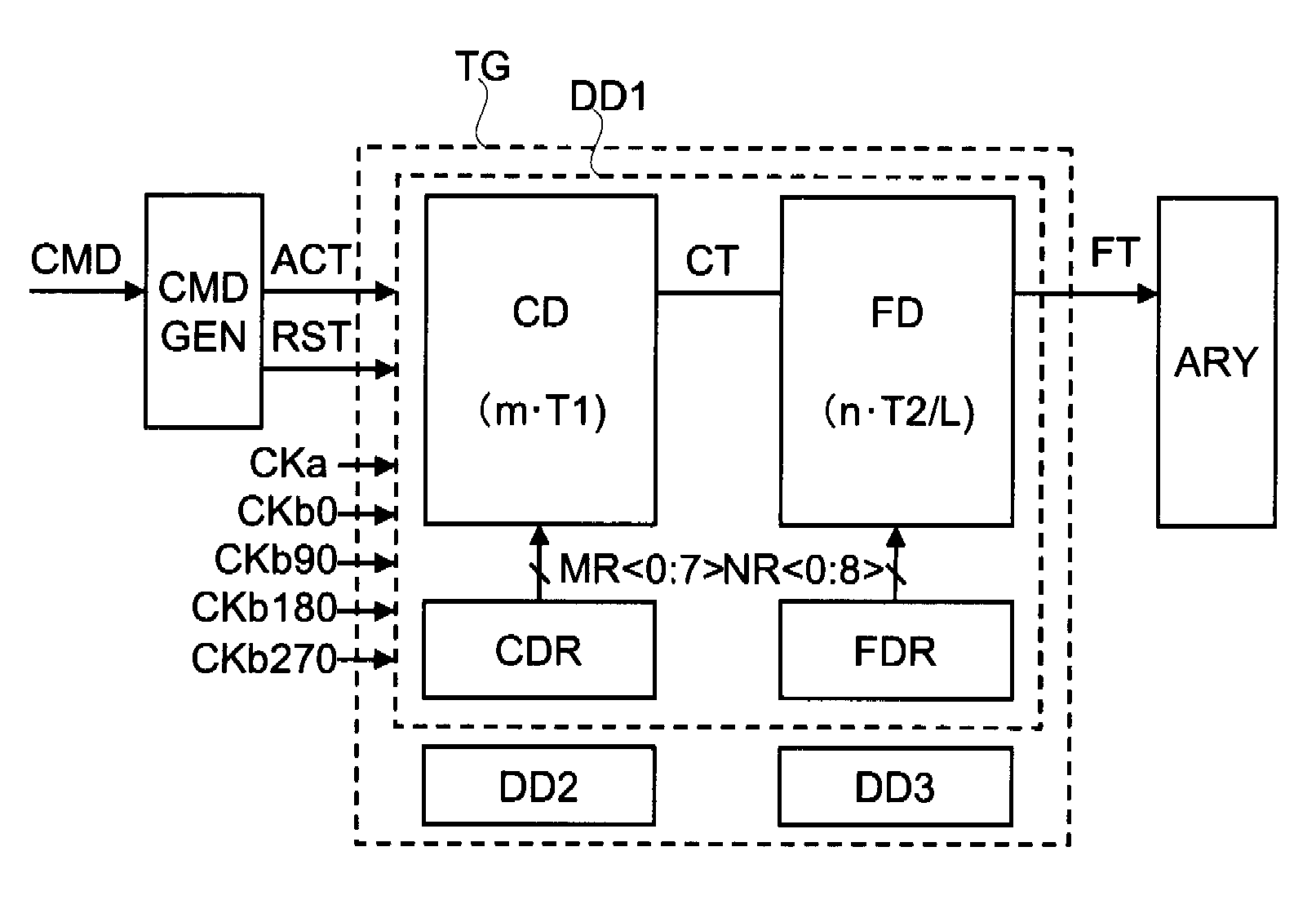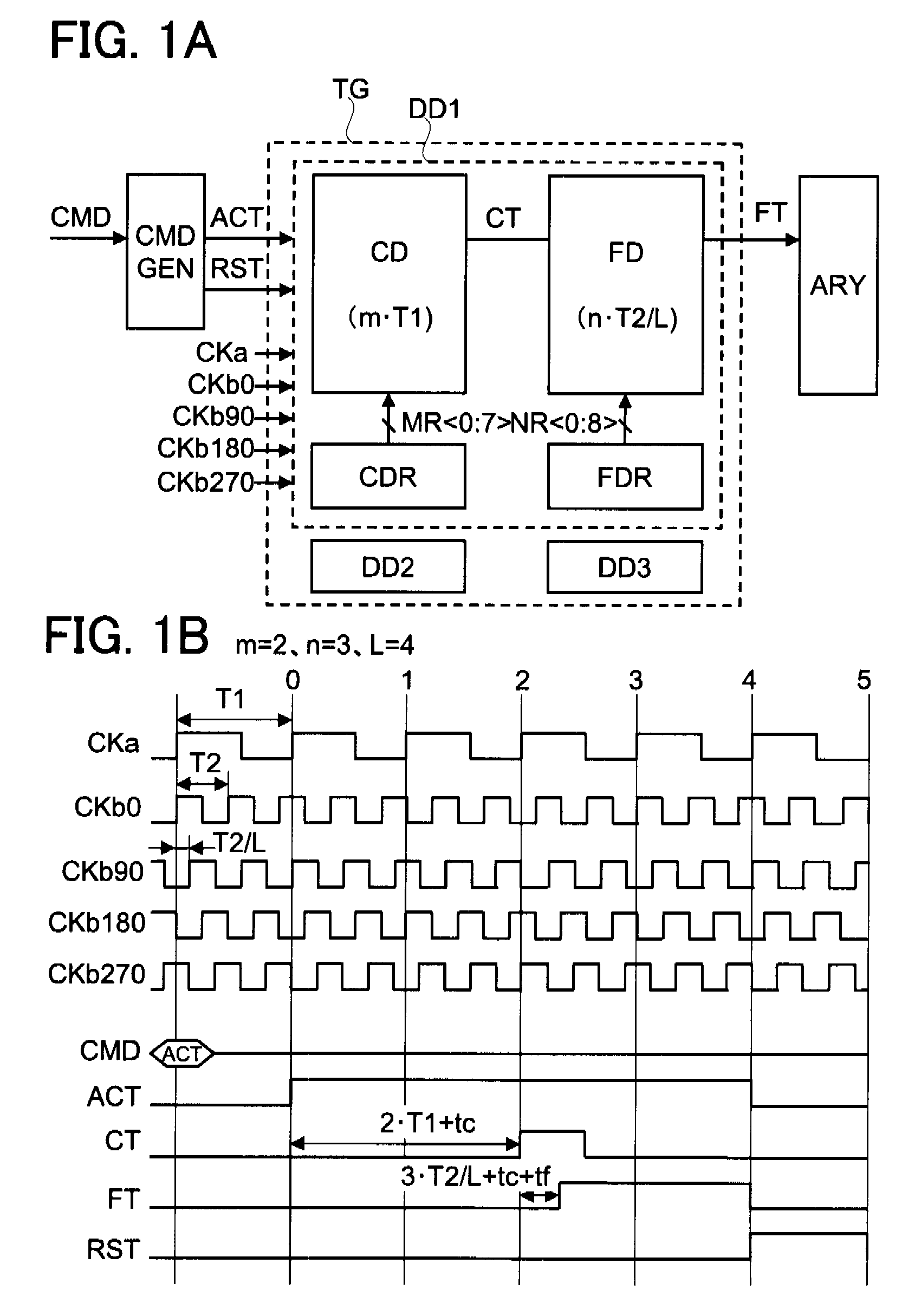Timing control circuit and semiconductor storage device
a timing control circuit and semiconductor technology, applied in the direction of generating/distributing signals, pulse techniques, instruments, etc., can solve the problems of difficult to raise the frequency, the operation of pipes cannot be carried out using flip-flops, and the variation of device characteristics has become a major problem
- Summary
- Abstract
- Description
- Claims
- Application Information
AI Technical Summary
Benefits of technology
Problems solved by technology
Method used
Image
Examples
Embodiment Construction
[0063]The modes of practicing the present invention will be described in detail with reference to the drawings. It should be noted that, in principle, identical members are identified by identical reference characters and will not be described repetitively in all of the drawings for describing the mode of the invention. Further, arrow symbols are appended to the gates of PMOS transistors in the drawings to distinguish these transistors from NMOS transistors. In addition, although the connections of substrate potentials of MOS transistors are shown, the method of connection is not particularly limited so long as the MOS transistors are capable of operating normally.
[0064]In the timing control circuit according to the present invention, the inputs are a first clock signal having a first period T1 and a group of second clocks having a second period T2 and constituting clocks of L phases (i.e., L-number of clock signals that differ in phase from each other by approximately T2 / L). When v...
PUM
 Login to View More
Login to View More Abstract
Description
Claims
Application Information
 Login to View More
Login to View More - R&D
- Intellectual Property
- Life Sciences
- Materials
- Tech Scout
- Unparalleled Data Quality
- Higher Quality Content
- 60% Fewer Hallucinations
Browse by: Latest US Patents, China's latest patents, Technical Efficacy Thesaurus, Application Domain, Technology Topic, Popular Technical Reports.
© 2025 PatSnap. All rights reserved.Legal|Privacy policy|Modern Slavery Act Transparency Statement|Sitemap|About US| Contact US: help@patsnap.com



